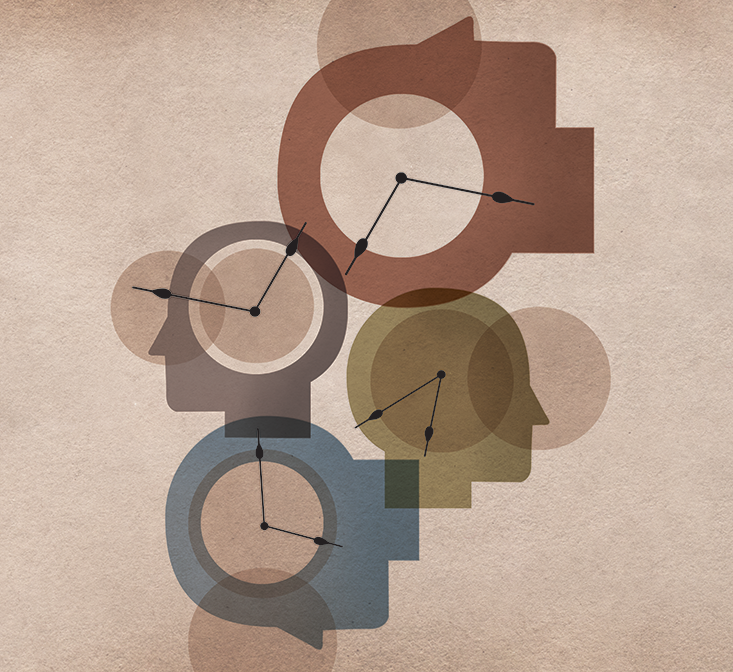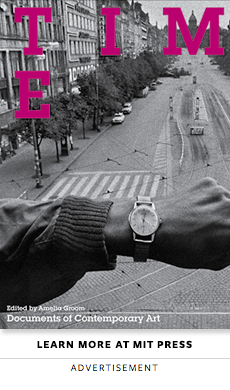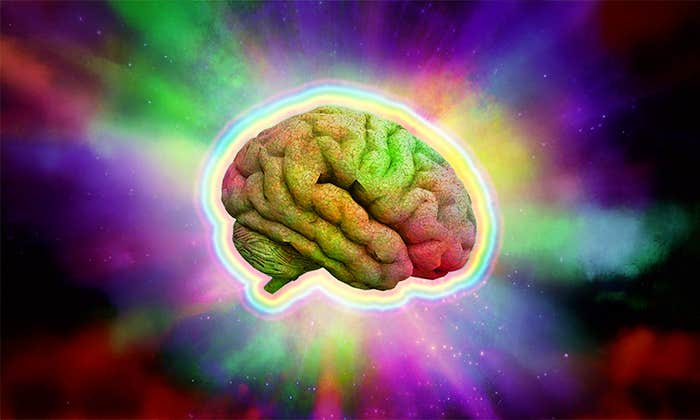Suppose a woman suffering a headache blames it on a car accident she had. Her story is plausible at first, but on closer examination it has flaws. She says the car accident happened four weeks ago, rather than the six weeks when it actually occurred. Plus she recalls her headache coming on sooner than it actually did. Steven Novella, a neurology professor at Yale University, says it’s an honest mistake. Novella’s patients frequently manipulate time, he says, something made clear by comparing their stories to their medical records. “People are horrible historians,” Novella says. “Human memory is a malleable subjective story that we tell ourselves.”
We tend to think that coffee makes us alert and pills soothe our aches faster than they actually do, for the same reason that a patient might move their accident closer in time to their headache. In our inner narratives, less time passes between perceived causes and effects than between unrelated events. Such mistakes, called temporal binding, slip into the conjectures we make when connecting the scenes of our lives. Like photos in an album, the causal links between them must be inferred. And we do that, in part, by considering their sequence and the minutes, days, or years that pass between them. Perceptions of time and causality each lean on the other, transforming reality into an unreliable swirl.
An example of this circular reasoning might go as follows: If you see a red billiard ball collide with a blue one, and the blue one immediately shoots forward, your past experience would lead you to assume that the red ball’s slamming against the blue one caused it to move. If the blue ball rolls before the red ball hits it, or if it rolls a minute later, you throw out the supposed connection between the two. However, the next twist in this decision process is that it can also work in reverse: Judgments of causality can influence the perception of time.

In 1999, Patrick Haggard, a cognitive neuroscientist at University College London, demonstrated this subjective time warp with an experiment in which subjects watched a clock on a computer screen, and were asked to note when they pressed a button, or when a tone sounded. When the button press was followed by a tone 250 milliseconds later, participants said their button press happened 15 milliseconds later than when no tone sounded. Similarly, they estimated the tone to happen 46 milliseconds earlier when they had pressed the button, than when they hadn’t. In essence, “causing” the tone with the button reduced the perceived time between the two events.
Haggard called the effect “intentional binding” because the conscious act of pressing the button appeared to trigger the phenomenon. Since he and his colleagues published these results in 2002,1 multiple other experiments have corroborated it. “Intentional binding is the first effect I’ve studied where every experiment I did worked,” says Andre Cravo at the Federal University of ABC in Santo Andre, Brazil.
More recent studies have shown that temporal binding can occur even when the subject is not directly involved with the action, removing the role of intentionality. Instead, all it takes is the perception that one thing caused another.2 For example, people shown causally related pairs of historical events—such as Russia’s putting Sputnik in orbit and America’s landing on the moon—underestimated the time between the events by a third. Meanwhile, they overestimated the time between unrelated events, like Sputnik and Woodstock, by half.3
Haggard and James Moore, a neuroscientist at Goldsmiths, University of London have also found that temporal binding can result from the anticipation of events that have not yet occurred. In their experiments, subjects delayed their perception of a key press when they expected to hear a tone—even if it never sounded.4 In another study, David Faro, a professor of marketing at London Business School, found that participants who more strongly believed that chewing gum would enhance their alertness experienced its placebo effect sooner.5 Temporal binding makes us more likely to delay an action until right before we need its effects. That’s not good when it means your coffee doesn’t kick in until halfway through your sleepy drive home, or you underestimate how long an assignment will take and miss a deadline.
Explaining the influence of prediction in temporal binding is tricky, however, because we don’t fully understand time perception. The most popular model of time perception describes an internal clock comprising a pacemaker that emits “ticks”—collective bursts in neural firing—and an accumulator that collects them. The number of ticks gathered over a given span is then compared to some reference in memory. Predicting an outcome might distract us from some ticks, and fewer collected ticks mean less perceived time. For the same reason, tasks that require attention cause time to appear to speed up. Recall the proverb: Time flies when you’re having fun.

Although the pacemaker model is useful, no one has identified the corresponding structures in the brain. If they exist, psychologists say they may be distributed throughout different areas, including the cerebellum and an outer layer of the brain near the midline called the pre-supplementary motor area. Similarly, a locale for temporal binding remains a matter of conjecture. “In terms of neural mechanisms, it’s still pretty much a mystery,” says Moore.
Regardless of how it occurs, some scientists suspect that temporal binding is more than just a mental quirk, but is instead a beneficial evolutionary adaptation that increases our sense of control over our environment and ourselves. For example, if you consciously think about lifting your arm and then you lift it, temporal binding will make the interceding gap seem shorter than it is. This tightened event coupling might then amplify the feeling of responsibility you experience when lifting the arm, making it clear that it wasn’t another person, outside force, or psychic spell that lifted it for you. Causal perception informs temporal perception; temporal perception informs causal perception. Through this positive feedback loop, binding heightens your feeling of responsibility.

That is, your sense of agency and free will. “This sense of agency,” Moore says, “is cognitively and socially important.” Temporal binding may encourage intelligent, intentional behaviors by lending us the confidence to feel that we can drive change. “All human societies require that their members are held responsible for their actions,” Moore says. “A sense of agency therefore is performing quite a useful social function.” In fact, binding serves as a good measure of perceived agency. In tests where subjects weren’t sure whether they or someone else triggered a sound, being told that someone else was responsible weakened the binding effect, even if the subject was indeed responsible.6 In another study, participants who played a virtual coin-slot game estimated the time between when they pressed a button, and when they won or lost.7 On losing turns, they thought more time passed, reflecting a desire to avoid responsibility for the loss. For similar reasons, binding between a key press and a cry of fear or disgust is weaker than that between a key press and a positive or neutral sound.8
Moore is now using temporal binding to evaluate human-computer interfaces. If clicking on one type of button rather than another increases temporal binding between the click and the effect, that’s an indication that it increased the perception of agency. “This is quite important,” Moore says, “because when people are designing user interfaces, one of the golden rules is to foster a sense of agency, a feeling that the user is in control.”
People tell tales about sickness, healing, growing up, growing old, following our dreams. Even consciousness itself is a story, with ourselves as the protagonist, wielding free will. Research on temporal binding implies that these stories are more important to us than an accurate internal clock. Perhaps our faulty perception of time is not a fault at all, but rather a tool. Without it we might lose some of the cohesion that connects the moments of our lives. Our starring role might dim.
Matthew Hutson is a New York City-based freelance journalist who writes for Wired, The New York Times, and Psychology Today, and is the author of the book The 7 Laws of Magical Thinking.
References
1. Haggard, P., Clark, S., & Kalogeras, J. Voluntary action and conscious awareness. Nature Neuroscience 5, 382-385 (2002).
2. Buehner, M.J. Understanding the past, predicting the future: Causation, not intentional action, is the root of temporal binding. Psychological Science 23, 1490-1497 (2012).
3. Faro, D., Leclerc, F., & Hastie, R. Perceived causality as a cue to temporal distance. Psychological Science 16, 673-677 (2005).
4. Moore, J. & Haggard, P. Awareness of action: Inference and prediction. Consciousness and Cognition 17, 136-144 (2008).
5. Faro, D. Changing the future by reshaping the past: The influence of causal beliefs on estimates of time to onset. Journal of Consumer Research 37, 279-291 (2010).
6. Desantis, A., Rousell, C. & Waszak, F. On the influence of causal beliefs on the feeling of agency. Consciousness and Cognition 20, 1211-1220 (2011).
7. Takahata, K. et al. It’s not my fault: postdictive modulation of intentional binding by monetary gains and losses. PLOS One 7, e53421 (2012).
8. Yoshie, M. & Haggard, P. Negative emotional outcomes attenuate sense of agency over voluntary actions. Current Biology 23, 2028-2032 (2013).























